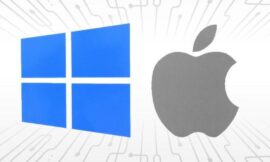From the COVID-19 vaccine to advances in machine learning, AI, improved W-Fi and 5G, and telemedicine, experts expect a move to “patient-centric” health next year.

Image: AndreyPopov/Getty Images/iStockphoto
COVID-19 accomplished what entrepreneurs, doctors, and activists couldn’t: Designing a healthcare system that works for patients instead of providers and health insurance companies.
The industry promised to be “patient-centered” for the last decade but only the harsh demands of COVID-19 have made this a reality. As Ian McCrae, CEO of Orion Health, described it, COVID-19 is ushering in the long-overdue transformation of the healthcare system and, finally, a move to “patient-centric” health.
“There will be a dramatic shift in health IT spend away from large, monolithic hospital upgrades, towards digital front doors into healthcare,” McCrae said.
SEE: COVID-19 workplace policy (TechRepublic Premium)
This means better data sharing, a universal rollout of a COVID-19 vaccine, operationalized machine learning, and more options for mental healthcare.
Here are seven predictions for how technology will shape healthcare in 2021.
The COVID-19 vaccine
Researchers went from sequencing the genome of the SARS-CoV-2 (COVID-19) virus to developing a vaccine in less than a year. There are three vaccines in the final stages of clinical trials that test safety and effectiveness.
The UK has approved under emergency use rules the treatment developed by Pfizer and BioNTech. Although 43,000 people participated in some phases of the clinical trials, the approval is based on data from 170 infections. The UK expects to deliver doses of the RNA-based treatment to frontline healthcare workers in December.
Moderna also has a promising treatment. This RNA-based vaccine is estimated to be more than 94% effective at preventing COVID-19, based on an analysis of 95 cases in a phase III trial. The company started this phase in late July with about 30,000 people.
Finally, researchers from Astra Zeneca and the University of Oxford in late November that their treatment was 70% effective based on early analysis of phase III trial data. The analysis found that lower doses of the vaccine may be more effective.
Once the vaccines have received final approval from the FDA in the US, the next challenge will be distributing the vaccine.
At AWS re:Invent, Amazon Web Services announced that it is working with Carrier to improve the cold chain distribution process with better monitoring and tracking data.
Continued demand for telemedicine
In 2020, many barriers to telemedicine were finally torn down, after decades of work from entrepreneurs and physicians. The new demands imposed by COVID-19 provided the motivation to solve regulatory and infrastructure demands that had previously been insurmountable.
Danish Nagda, founder and CEO of Rezilient Health, said that changes in reimbursement policies reduced a lot of friction associated with getting telehealth up and running. The need to keep seeing patients during the pandemic lockdowns had a financial motivation also.
“Throughout the lockdown in many states, in-person clinical care, which represents a large source of revenue for healthcare providers, was deemed “nonessential,'” he said. “So, if a healthcare provider wanted to capture even a portion of this lost revenue, telehealth was no longer optional, they had to adopt telemedicine.”
Varsha Rao, CEO of Nurx, a digital health practice for women, said she expects to see continued high usage of telehealth for selected areas of care as patients have now realized the quality and convenience of telehealth and have developed habits that will stay with them.
This includes contraception, sexual health, STI testing, dermatology, mental health, diabetes, high cholesterol, and hypertension, according to Rao.
She also expects to see people look for more convenient ways to get healthcare, after experiencing Covid swabs at drive-through clinics, flu shots at supermarket pharmacies, and prescription medications through telehealth. As remote work options increase, people will want to get care wherever they are.
“This makes telehealth an attractive alternative as it allows them to get care from anywhere and also maintain continuity of care when they’re unsure where they’ll move next,” she said.
Improved Wi-Fi and 5G connectivity
Roger Sands, CEO and co-founder of Wyebot, said wireless networks became even more crucial in 2020 as patients relied on personal devices as the only way to communicate with loved ones hospitalized due to COVID-19.
In 2021, Sands expects healthcare use cases for wireless devices to cover everything from life-saving patient monitoring, to communication, to security systems. Wi-Fi automation will be key to keeping these networks up and running.
“The wireless network has to work at all times, no questions asked, which is why more facilities will rely on automation and artificial intelligence platforms to monitor the network, providing complete visibility at all hours and automatically alerting IT to any issues,” he said. “With thousands of devices connected, the network generates more data than humans can analyze in real time.”
Telemedicine also can benefit from improved connectivity. Nagda, of Rezilient, pairs a doctor with a robot to allow physical exams during a telemedicine visit. Nagda said that for the exam components the company delivers currently, the system can work run on Wi-Fi and even 4G LTE.
“If we are to enable the physician to palpate the patient remotely, we will need to reduce latency from 200ms to 1ms and this can only be achieved with 5G,” he said.
Better remote patient monitoring
If more people are doing telemedicine visits, physicians will need a way to collect vital signs and other data points from a remote location. That’s where remote patient monitoring (RPM) comes in. Internet-connected blood pressure cuffs, scales, IoT glucose meters, IoT thermometers, the Blood Oxygen sensor in the Apple Watch Series 6, and sleep monitoring devices all can provide data for RPM.
Daniel Kivatinos, COO and co-founder of DrChrono, said RPM tools provide doctors and nurses with real-time patient data.
“With more physicians turning more to virtual care, telehealth and EHRs that manage this critical patient data are proving to be the lifelines to modern healthcare going forward,” he said.
Operationalizing machine learning and artificial intelligence
Art Papier, CEO and co-founder, VisualDx, said that 2020 marked a real turning point for artificial intelligence in healthcare. This trend showed up in the form of basic chatbots and symptom screeners in the early months of the pandemic. These tools have increased the overall acceptance of AI which will fuel the adoption of more advanced AI in 2021, Papier said.
“Specifically, physicians will leverage mature diagnostic tools in the exam room to overcome a range of challenges that impede fast, accurate decision-making: racial bias embedded in our healthcare system, the need to discern COVID symptoms from other diseases within the differential diagnosis, and more,” he said.
Stefan Behrens, CEO and co-founder of GYANT, said that AI tools that streamline virtual care and extend on-demand services became a necessity instead of something that was nice to have.
“The healthcare industry is inundated with point solutions and we have seen an added emphasis on integrations recently to bring these disparate pieces together,” he said.
Brian Colburn, SVP of corporate development and strategy at Alegeus, said that AI can help guide employees through the process of signing up for health insurance.
“Employers can’t continue to have unrealistic expectations that consumers will figure things out on their own,” he said. “We need to stop thinking about fitting consumers into the healthcare system, and instead morph the system to solve for the consumer.”
Grace Chang, founder and CEO of Kintsugi, said that machine learning has had a tremendous impact on healthcare in 2020 and expects that trend to continue into 2021 by providing more tools to treat patients via telemedicine, she said.
“The ambitious goal our team at Kintsugi sought out to accomplish was to use deep learning to identify voice biomarkers for anxiety and depression to ensure early detection and intervention for individuals suffering from behavioral health concerns,” she said.
The company recently won multiple National Science Foundation SBIR grants for developing this novel AI technology.
Improved data sharing and interoperability
With new data ranging from COVID-19 test results to Apple Watch data to telemedicine visits, interoperability will be more important than ever. The healthcare industry has made improvements in this area over the last decade but there are still barriers to conquer.
Scott Galbari, chief technology officer at Lyniate, said that he expects interoperability will be a huge priority for public and private healthcare organizations and companies in 2021. He anticipates that the new administration will likely continue to prioritize interoperability with reinvestment in and modernization of the IT infrastructures of federal and state public health agencies, in order to better position and prepare the US healthcare system for future public health crises. Seamless data sharing also will be crucial to the distribution of the COVID-19 vaccine, he said.
“The most imminent issue we will face going into 2021 is the COVID-19 vaccine distribution, including storing and shipping the vaccine, as well as the potential need for healthcare and employee data to interoperate,” he said. “Without interoperability, data sharing, care decisions, workflows, and patient outcomes suffer.”
Using technology to expand mental health care
Sheena Pirbhai, CEO and founder of SPHERE, said that the pandemic has led to an increased awareness of how tech can be leveraged remotely to help everyone cope with stress and anxiety.
“In turn, 2021 will be a defining year for digital tech solutions—after the fatigue settles, we will see solutions cutting through the noise by offering science-backed evidence that help businesses drive results-orientated strategies,” she said.
SPHERE is a digital therapy app designed to address the mind’s emotional response to stress, anxiety, or PTSD using neurofeedback.
Katherine Grill, CEO and co-founder of Neolth, predicts that within the next five years, a majority of schools will be using digital health solutions as part of their ecosystem of mental health resources.
“Schools appreciate the affordability and accessibility of digital mental health, while students love the privacy, convenience, and personalization,” she said.
Neolth uses neuroscience to determine the most effective behavioral care for students.
Sean Iacobone, CEO of Holisticly, a provider of personalized employee wellness plans, said that the pandemic also has forced employers to do more to support mental health.
“In 2021, we expect this trend to grow tenfold, with exponential growth of the number of companies providing wide-ranging wellness benefits to their employees—especially in the small to mid-enterprise markets,” he said.
Also see
Source of Article




